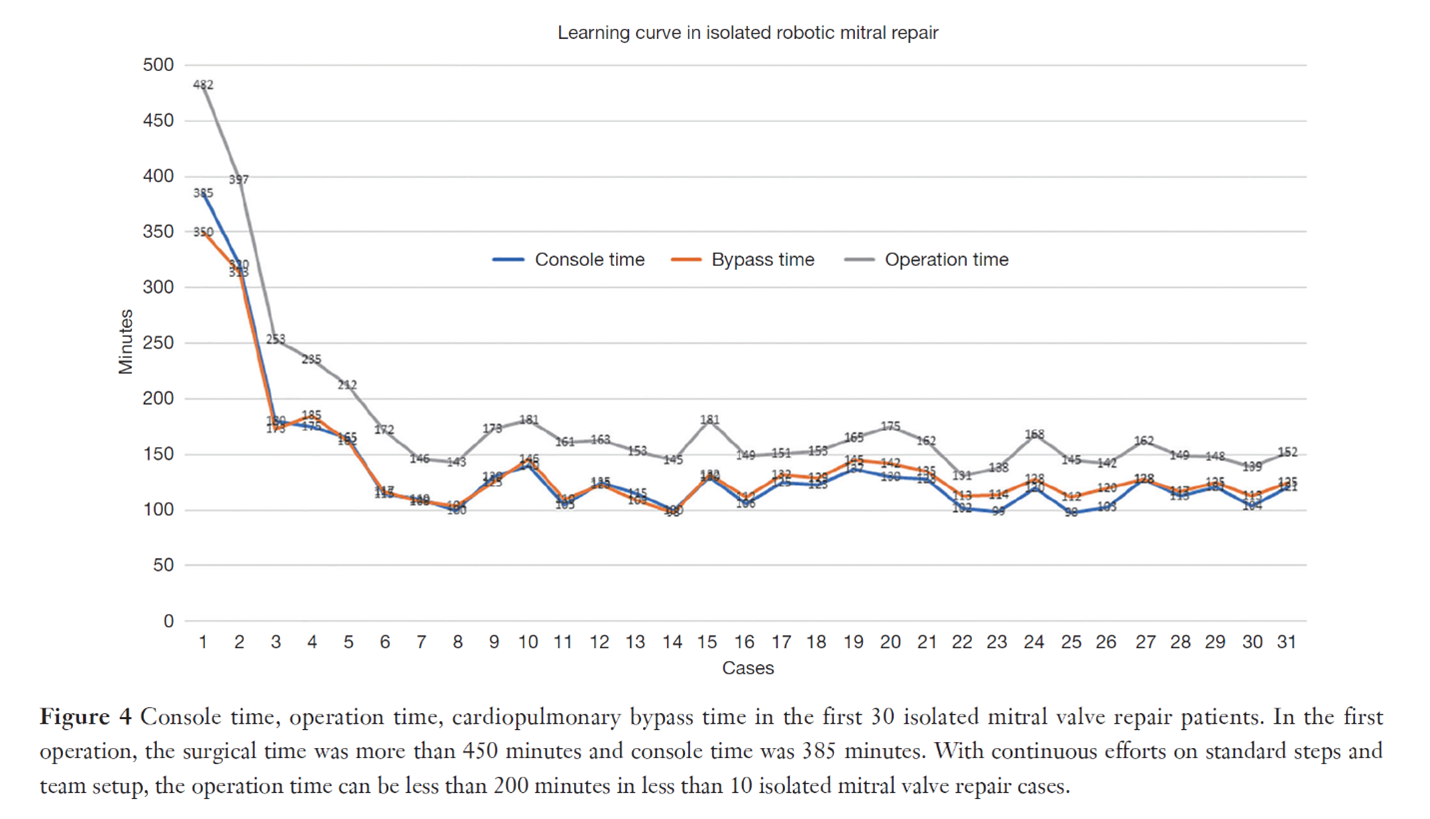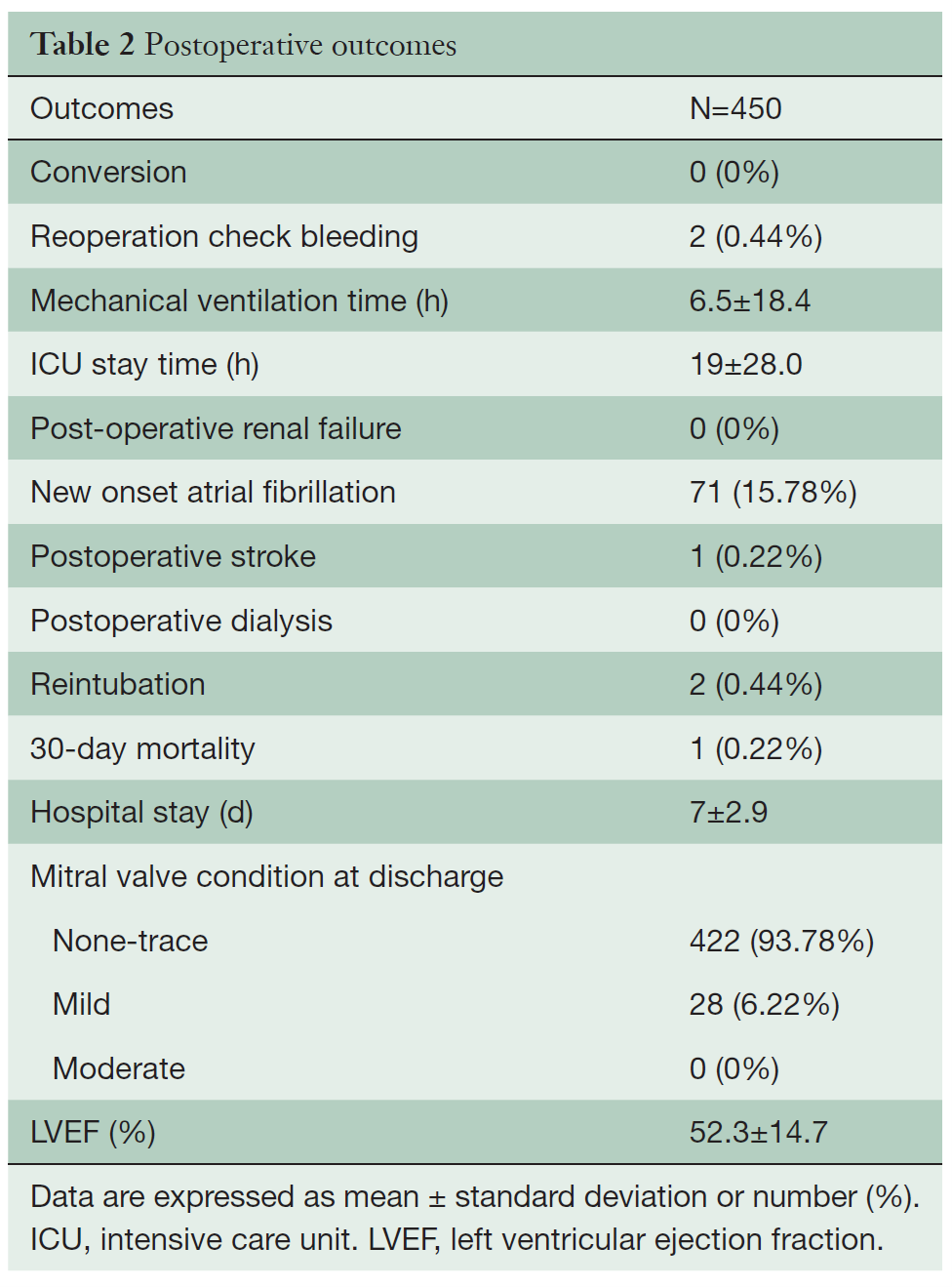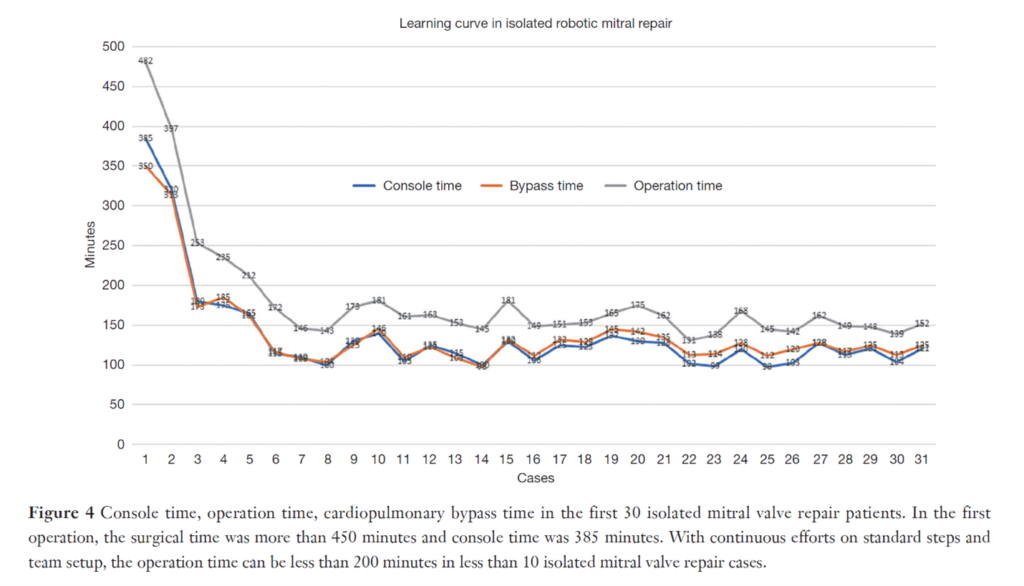研究主題:臺灣大學附屬醫院機械化二尖瓣修復技術十年成果
撰寫:學生邱千容
眾所皆知臺灣的醫療享譽國際,周迺寬老師所在的臺大醫院心臟內外科團隊(包括小兒內外科)引進許多心衰竭的治療方法,包含但不僅限於心臟節律器、新型藥物,因心臟的重要性以及精細的生理構造,該團隊更結合了微創觀念將機械手臂(包含達文西手術)帶進手術中。雖然臺灣因為產前檢查發達,先天性心臟病的個數有逐漸減少的趨勢,但近幾年來至臺大醫院接受治療的困難病例卻逐漸增加。而隨著醫療技術及科技的發達,全世界平均壽命也逐漸延長,大約有一成的75歲以上老年人具有二尖瓣逆流的問題。
從2012到2022年,台大醫院心臟科團隊總共收了450名使用機械協助二尖瓣修復治療的個案。[1]根據病徵的不同,該團隊整理出來不同的治療方案,且如圖,其手術時間、體外循環機使用時間、恢復時間從一開始到大約30個個案後便大幅下降並趨於穩定,且在離院時平均左心室射出分率(Left ventricular ejection fraction-LVEF)已經高出正常標準值。表中可以看到使用該治療方法只有少數個案具有術後較不樂觀的現象,大部份患者都在往後十年避開了罹患中度二尖瓣疾病的機會。


Research Topic:
Robotic mitral valve repair in National Taiwan University Hospital: 10-year results
Taiwan’s healthcare system is internationally well-known. Professor Nai Kuan Chou is a team member of the team at National Taiwan University Hospital which is in the field of cardiology and cardiovascular surgery (including pediatric cardiology and surgery). The team has introduced various treatment methods which include but are not limited to cardiac pacemakers and novel medications for heart failure. In the intension of minimizing the lesion, which dues to the critical importance and intricate physiology of the heart, they also apply robotic-assisted surgery (including da Vinci surgery).
Although Taiwan has seen a gradual decrease in the number of congenital heart disease cases due to advanced prenatal screenings, there has been an increasing number of challenging cases seeking treatment at National Taiwan University Hospital in recent years. With the advancement of medical technology and healthcare, the worldwide average lifespan has been extending, and approximately 10% of the elderly who is aged 75 or older will occur mitral regurgitation problems.
From 2012 to 2022, the cardiology team at National Taiwan University Hospital has treated a total of 450 cases with rboticl-assisted mitral valve repair. [1] Depending on the anatomical lesion sets, the team determine different repair strategys. As shown in the figure, surgical time, extracorporeal circulation time, and recovery time have significantly decreased and stabilized after the initial 30 cases. Moreover, the average left ventricular ejection fraction (LVEF) reachs normal standards at discharge. The table indicates that only a minority of cases treated with this method experienced negative postoperative outcomes, while the majority of patients have reduced their risk of having moderate mitral valve disease over the following ten years.
[1] Chou NK, Wang YC, Huang CH, Chi NH. Robotic mitral valve repair in National Taiwan University Hospital: 10-year results. Ann Cardiothorac Surg. 2022 Nov;11(6):605-613. doi: 10.21037/acs-2022-rmvs-29. PMID: 36483617; PMCID: PMC9723526.

